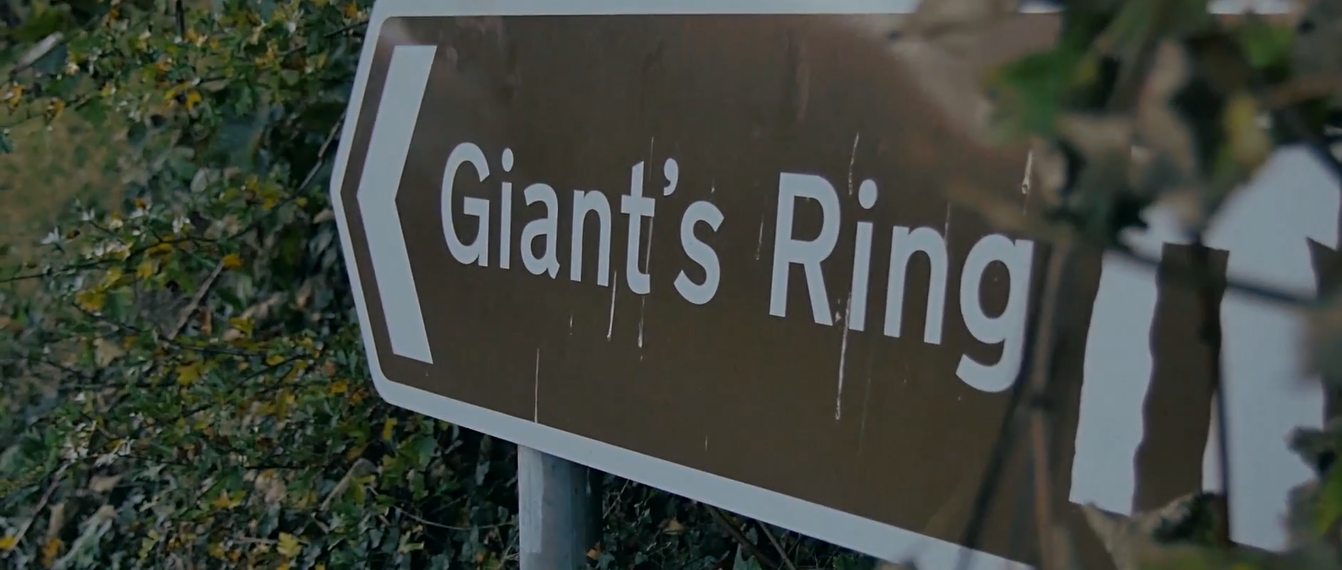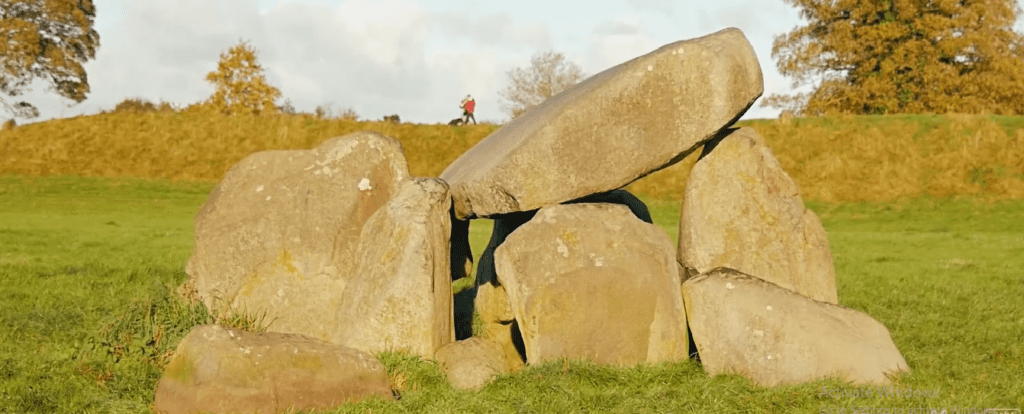360 Degree Video of The Giants Ring, Belfast

Updated On: March 19, 2024 by Ciaran Connolly
The Giants Ring
The Giants Ring is a fantastic monument in Northern Ireland, particularly in Belfast. This monument sits at Ballynahatty near Shaw’s Bridge in Belfast. Viscount Dungannon used to be responsible for maintaining the memorial and keeping it unspoiled. Viscount Dungannon was a title of nobility- just like Baron or Lord- but it ended in 1706. Around the site, there is a wall with an inscribed stone tablet. Legends claim that Charles A Thompson was the one who carved those inscriptions. Years later, his granddaughter, Ann Aston, confirmed those claims. She stated that her grandfather told her about carving that stone in 1919.
History of the Giants Ring
Since the Neolithic period, the Giants Ring has been around since it was built in 2700 B.C. The site is way too old and even older than the Egyptian Pyramids. The sole purpose of this place was either to be a memorial to the dead or a meeting place. Some even claim that the henge belonged to a building used for ritual purposes. Throughout the years, the site served several public purposes. In the 18th century, it was a perfect site for horse racing.
About the Site
The site is a State Care Historic Monument. Above and beyond, it has the status of ASAI, which means an Area of Significant Archaeological Interest. This site has a circular enclosure measuring around 200 meters in diameter. Besides, it has around 7 acres in terms of area.
A small passage tomb lies at the eastern part of the centre of the enclosure. What is left are only the remains of what used to be a tomb. The tomb has a useless passage that is not functioning at all, facing the west side of the enclosure. On the other hand, some reports claim that other tombs are outside that enclosure. However, no traces of them were anywhere to be found, just the one inside the enclosure.
Usually, people refer to the enclosure as the henge. It looks so impressive that it is a massive arena made of clay and boulders. In 1954, archaeologists carried out some excavations in the area. They claimed to have found an inner waterway. The channel banks have small gaps that go back to the early Bronze Age. More reports stated that archaeologists and experts believe this henge used to be part of a ritual building. It used to sit around the Lagan Valley.
Legends and Mythology Surrounding The Giants Ring
As with many ancient sites, The Giants Ring is steeped in legend and folklore, passed down through generations of storytellers. One of the most enduring myths associated with the monument is the tale of Fionn mac Cumhaill, a legendary Irish giant who purportedly built the structure as a ceremonial gathering place.
According to legend, Fionn mac Cumhaill was tasked with creating a platform from which he could survey his kingdom. In a display of immense strength and skill, he constructed The Giants Ring using massive stones and earth, shaping the landscape to his will. While the truth behind this myth remains elusive, it is a testament to the enduring fascination with The Giants Ring and its enigmatic origins.
The Giants Ring and Religious Principles

As mentioned, the archaeologists believe the henge was part of a ritual building. Besides, adjacent to it is a ritual site that Barrie Hartwell excavated in the early 90’s.
Moreover, Michael J. O’Kelly reported that the Giants Ring contained evidence of some religious practices. Those practices involved honouring the dead as the essence of the principles of a Neolithic religion. He believed that hundreds of passage tombs in Ireland served similar purposes. Especially those particular ones that belonged way back to the Neolithic period.
The Giants Ring in Modern Times
Despite its ancient origins, The Giants Ring attracts visitors worldwide, drawn by its charisma and historical significance. Today, the site is managed by the Northern Ireland Environment Agency and is open to the public year-round, free of charge. Visitors can explore the monument at their leisure, wandering along the ancient pathways and contemplating the mysteries of the past.
In addition to its archaeological importance, The Giants Ring also plays a vital role in the local community, serving as a venue for cultural events, festivals, and educational programs. From guided tours to archaeological workshops, there are countless opportunities for visitors to engage with the site and learn more about its significance in Northern Ireland’s history.
Cultural Significance
Beyond its archaeological importance, The Giants Ring holds immense cultural significance for the people of Belfast and Northern Ireland as a whole. For centuries, it has been revered as a sacred site, steeped in myth and legend and woven into the fabric of local folklore.
The monument has inspired artists, poets, and storytellers, who have sought to capture its mystique and beauty in their works. Its timeless appeal continues to draw visitors from far and wide, each seeking to unravel the secrets of this ancient marvel and connect with the spirits of the past.
In recent years, efforts have been made to preserve and protect The Giants Ring for future generations, ensuring its legacy is enduring for centuries. Conservation initiatives and educational programs have been implemented to raise awareness of the site’s importance and promote responsible stewardship of this cultural treasure.
Astronomical Alignments
One of the prevailing theories regarding the purpose of The Giants Ring is its potential astronomical significance. Some researchers suggest that the monument may have been used for observing celestial phenomena, such as solstices, equinoxes, or lunar cycles. The alignment of the entrance to the central tomb with the rising sun during the summer solstice has led to speculation about its possible role in ancient calendrical or religious practices.
While the evidence for astronomical alignments at The Giant’s Ring remains speculative, the notion of its connection to celestial events adds another layer of complexity to its interpretation. The possibility that our Neolithic ancestors possessed knowledge of astronomy and used it to design and orient their monuments underscores the sophistication of their culture and worldview.
Conservation and Access
In recent years, efforts have been made to preserve and protect The Giants Ring for future generations to enjoy and study. The Department for Communities manages the site through the Historic Environment Division, which oversees its conservation and maintenance. Measures have been implemented to safeguard the monument against erosion, vandalism, and other threats, ensuring its survival for years.
Visitors to The Giants Ring can explore the site and its surroundings via walking trails, offering panoramic views of the Lagan Valley and the Belfast skyline. Interpretive panels provide information about the monument’s history, archaeology, and folklore, enhancing the visitor experience and educational value of the site.
Preserving The Giants Ring for Future Generations
As custodians of our ancient heritage, we must take steps to preserve and protect sites like The Giants Ring for future generations. Through careful conservation efforts and ongoing research, we can ensure that this remarkable monument continues to inspire wonder and curiosity for centuries.
Recently, there has been increased recognition of safeguarding our cultural heritage, leading to initiatives promoting awareness and conservation. By supporting these efforts through funding, advocacy, and public engagement, we can ensure that sites like The Giants Ring remain accessible to all and continue to serve as windows into our shared past.
Visiting The Giants Ring
For those eager to experience the magic of The Giants Ring firsthand, a visit to the site promises an unforgettable journey through time. As you approach the monument, you’ll be greeted by the sight of its imposing earthworks and towering dolmen, standing as silent sentinels against the backdrop of the rolling countryside.
Wandering through the circular enclosure, you’ll feel a sense of awe and reverence, as if stepping back in time to an era long forgotten. Take a moment to pause and contemplate the mysteries that surround you, imagining the rituals and ceremonies that once took place within these ancient walls.
For those interested in delving deeper into the history and significance of The Giant’s Ring, guided tours and informational exhibits are available, providing fascinating insights into the site’s archaeological and cultural heritage. Knowledgeable guides will lead you on a journey of discovery, sharing tales of the past and illuminating the hidden meanings behind the stones.
Conclusion
In the heart of Belfast lies a hidden gem, shrouded in mystery and steeped in history: The Giants Ring. This ancient monument, dating back over 4,000 years, stands as a testament to the ingenuity and spirituality of our ancestors. From its impressive earthworks to its intricate causewayed enclosure, The Giants Ring continues to captivate visitors with its enigmatic presence.
As we wander through the ancient pathways and contemplate the mysteries of the past, let us pause to reflect on the significance of this remarkable site. From its origins in prehistoric times to its enduring allure in the modern world, The Giants Ring reminds us of the rich tapestry of human history and the timeless beauty of our shared heritage.
Have you ever been to the Giants Ring? We would love to hear any experiences you have 🙂
Also, don’t forget to check out other places and attractions around Northern Ireland: Titanic Dock and Pump House| Grianan of Alieach| Irish Mythology| Giants Causeway| Glens of Antrim|






